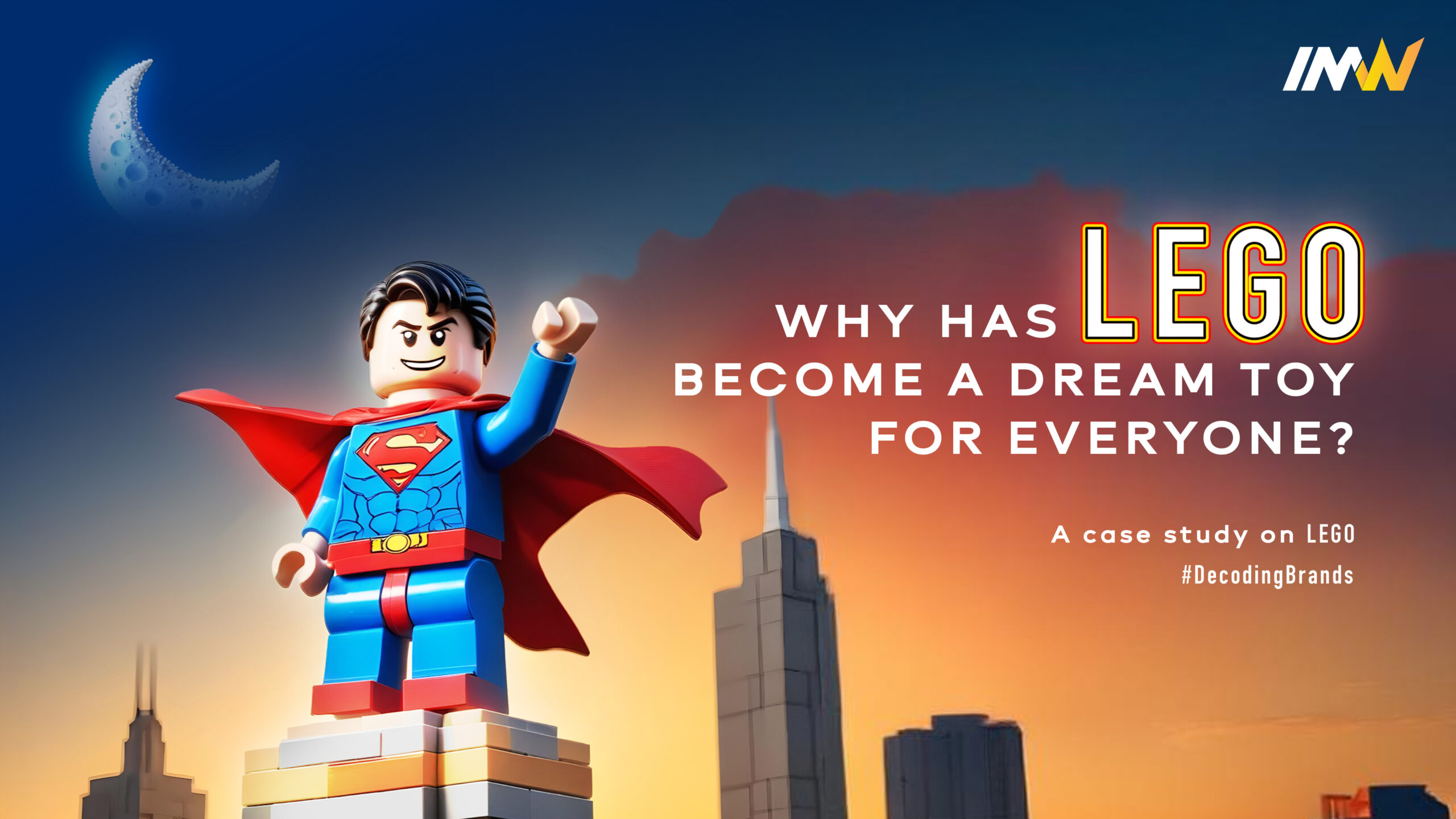Recent Posts
- Impact of Formula 1: The Fastest Lane to Modern Marketing Strategies
- Key Digital Marketing Upgrades to Watch in 2025
- 6 Best Christmas Campaigns by Top Brands
- Understanding Your Brand’s Colour Personality: The Psychology of Color in Marketing
- Bizarre Digital Marketing Trends You Won’t Believe Are Real
Recent Comments
Categories
Recent Posts
- Impact of Formula 1: The Fastest Lane to Modern Marketing Strategies
- Key Digital Marketing Upgrades to Watch in 2025
- 6 Best Christmas Campaigns by Top Brands
- Understanding Your Brand’s Colour Personality: The Psychology of Color in Marketing
- Bizarre Digital Marketing Trends You Won’t Believe Are Real
Recent Comments
Why Has LEGO Become a Dream Toy for Everyone? A Case Study on LEGO #DecodingBrands

What is the first toy that comes to your mind when you think of your childhood? For many, it is LEGO. Colorful and interlocking bricks have become a staple of playrooms everywhere, and yet seem timeless. But why has LEGO evolved beyond just being a toy? How has this building brick gained an inclusive power to conquer the minds of not only kids but adults too, even those at the epicenter of whole industries? Let us take a closer look at this great case study to decode the magic lying beneath the LEGO brand.
The Power of Imagination
For constructive reason, LEGO is not just a plaything; rather, it’s a request to create. At an early stage of life, children get attracted to unlimited options offered by these bricks. There are no limits to what one can make like castles, spaceships and cars or even entire cities. Unlike other kinds of toys that have limited stories or purposes, with LEGO every user can be able to tell their own stories. This is what distinguishes LEGO from other toys of its kind.
However, the most amazing part is how LEGO has journeyed alongside its users through different stages in life. A five-year-old will be happy with a simple design but as he/she matures his/her constructions become more intricate and complicated like their personal development journey that goes through all the phases of growing up at once. This is why people of all ages still prefer playing with LEGOs around the globe.
Connecting Generations
LEGO is not only loved by children. There exist whole societies of adults whose main purpose in life is to build things with those blocks. With the proliferation of LEGO kits targeting older people, such as detailed architecture or themed collections like Star Wars, the company has succeeded to remain important throughout ages. A friendly interactive pastime for kids slowly transformed into an interesting activity attracting many grown-ups and fostering creativity as well as eliciting feelings of nostalgia.
Moms and dads tend to enjoy time spent decorating their kids’ playrooms even if they don’t have any intention of buying some toys themselves. Therefore, it can be said that this game has erased all age barriers paving the way for intergenerational understanding through creativity.
The Role of Innovation
One of the biggest strengths LEGO has is the fact that it continuously innovates. Sure, the basis of a plastic brick that snaps into another has remained the same, but the brand keeps modernizing. Harry Potter, Marvel, Minecraft-these are several themed sets that have appealed to different fandoms and new markets. There is LEGO Technic and Mindstorms, enabling higher levels of engineering and robotics projects, introducing STEM-Science, Technology, Engineering, Math-skills through play.
LEGO also moves with the times: it changes, yet it doesn’t lose its identity. LEGO video games, sets that implement augmented reality, and even movie partnerships that build on the well-received move called The LEGO Movie have expanded their reach. These innovations keep LEGO fresh and exciting while remaining steadfast to its original mission of building creativity.
Sustainability and Purpose
Sustainability has become a buzzword for business people in recent times. LEGO is also such that it has made commitment of embarking on manufacturing all its core product from sustainable materials by the year 2030. By so doing, it is going to largely resonate with modern consumers especially those belonging to Generation Z who are highly aware on their purchases and their effects to environment.
It goes beyond selling toys, but aligns with the principles held by its audience. They do not only construct buildings but also strive towards constructing a better future.
Encouraging Problem Solving and Cooperation
In addition, LEGO is an extraordinary instrument for within lessons, be that teaching kids about architecture, engineering or problem solving. The building with LEGO involves among other things; spatial awareness, reasoning and patience which are all required in overcoming hurdles. It promotes experimentation as well as failure which is an essential part of learning process.
LEGO also promotes teamwork in a wider sense. Whether it’s family time playing with LEGO or engineers working together to build prototypes using this material, cooperation and dialogue are encouraged. In both educational settings and playtime, such joint problem-solving makes a major attraction.
Conclusion: More Than Just a Toy
So, why is LEGO the toy dream of all? For one simple reason: LEGO manages to combine creativity, innovation, and purpose in a way that very few other products can. It is intergenerational, cross-industrial, even cross-play. LEGO gives joy whether it’s a kid building his first tower or an adult making an advanced architectural model; it educates and connects people in ways few other things could.
In a world of passing fads, LEGO has constructed something much more durable: a community of creatives, visionaries, and problem solvers. And that perhaps is its largest achievement.
- No Comments

